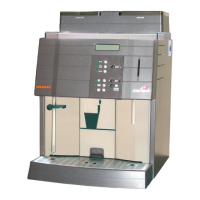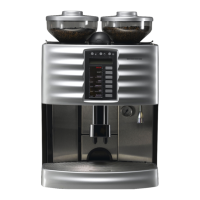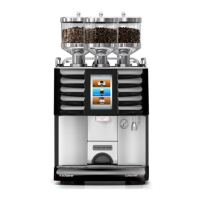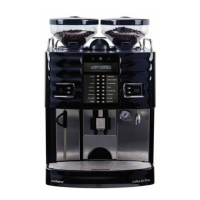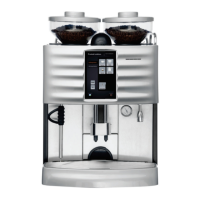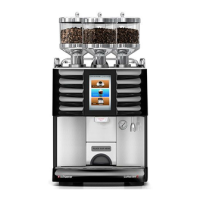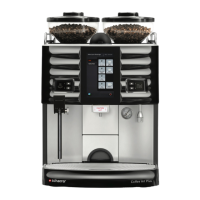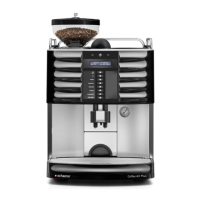Chapter 4 Fault diagnosis
90 SMSO-2-02.03- 15.07.03
4.1.4 Fault lists
The fault lists are structured as follows:
system / component
possible cause
remedy
In the remedy column, you will generally find a reference to
the relevant section of the chapters on “Maintenance”, “Con-
trol system diagram”, and “Spare parts list”..
The sequence of the description of the fault is system-specific.
In hydraulic systems, it is in the order of the flow of water,
i.e. from the water connection to the discharge point of
the product concerned.
In electrical systems, it is in the order of the direction of
current (signal flow).
For program errors, it is in the sequence of operator
guidance.
In this way all the components are included systematically into
consideration and thoughts regarding the location of the fault.
We recommend, particularly to less experienced service tech-
nicians, that when locating a fault, you systematically check a
sub-system of a machine from the very beginning. This is
important because often several faults together can cause a
malfunction.
The most frequent faults have a grey background.
The first part lists all the faults that are displayed as fault mes-
sages on the display, and where, according to the user man-
ual, a service technician needs to be called if the customer
cannot rectify the fault himself.
Understanding of the system
All the systems are explained in compact form, together with
their mechanical, hydraulic and program functions, in the sec-
tion entitled “Functional descriptions, system descriptions.
4.1.5 Grades of fault
The coffee machine has a comprehensive programmed auto-
diagnosis system and monitoring functions to assist in fault
location. This interactive help makes the search for faults
considerably easier. A requirement for it to operate correctly is
that the program is functioning perfectly, and all the conditions
are met to enable the program to run.
From this, it follows that not all errors and faults are equally
serious. There are, as it were, more serious errors and faults
and these defects can be differentiated in principle into three
grades of weighting. These three grades are independent of
one another.
The first grade is made up of the straightforward, passive
components and basic functions: They are not monitored
and a defect is not indicated anywhere. Intervention can
take place independently of the functioning of the other
grades. A service technician must detect such first grade
defects having made plausible checks and tests.
The second grade is formed by all the elements of which
the functions are monitored. Their function depends on
the ability of the program to function reliably. Fault
statuses are detected and indicated on the display panel.
Specific corrective action can then be taken.
The third grade of fault is formed by the control system
(program). The program cannot sufficiently monitor itself.
A partial malfunction in the program is correspondingly
difficult to diagnose. You should ensure that the complete
interactive section of the machine consists of a number of
ICs as well as the display and the input elements. It is
also correspondingly difficult to reproduce the interactive
part of the machine.
The following consequences result from the three grades of
fault weighting as stated, especially if certain events affect
components from all three grades of fault.
The “sequence of repair” goes from level 3 to level 1.
In practical terms this means:
First the program and the input/output elements must be
functioning correctly.
At this point, the elements from the second grade are
being monitored and these diagnostic functions provide
information regarding the repair of elements in this grade.
Finally faults in the first grade can be located more easily
on the basis of the third and second grades that are now
functioning correctly. These faults are generally of a
purely mechanical nature.
The three grades of faults
1. Basic faults (passive components such as the safety
valve, pump, pipes)
2 Monitored functions (active components) such as heater,
piston motor, limit switch
3 Interactive elements such as the program, chip cards, unit
control system etc.
4 Direction of repair (from grade three to grade one)
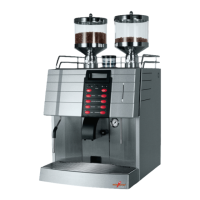
